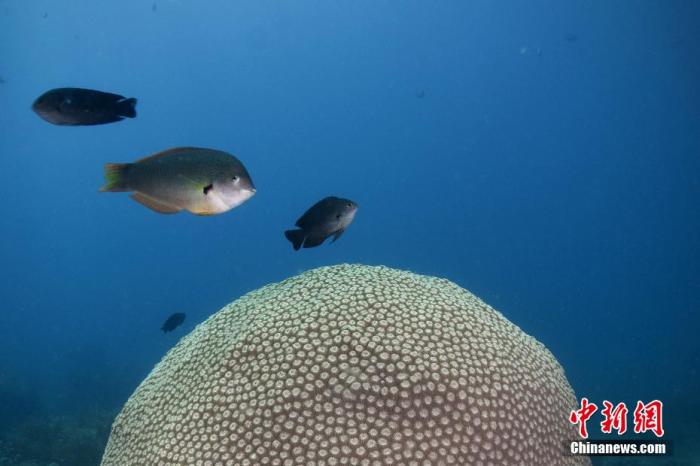Chinanews, October 26th, a comprehensive report, from a draft report of the United Nations, scientists have found multiple catastrophic "climate tipping points."
Experts warn that the critical points are interconnected and may have a chain reaction and become an existential threat.
Data map: Elephants are walking under the sunset in the African savannah.
Image source: ICphoto
According to reports, according to a draft climate impact report of the United Nations Intergovernmental Panel on Climate Change, scientists have seen many tipping points in the global coral reef and polar ecosystems, and more may appear in the near future.
Singapore’s "Lianhe Zaobao" quoted AFP as saying that on October 31, when leaders of various countries will attend the United Nations Climate Conference in Glasgow, they are expected to focus on the goal of controlling global warming at 1.5 degrees Celsius.
However, what really worries scientists is that we are getting closer and closer to multiple catastrophic "climate tipping points."
Above the spherical coral, breasted sea hogfish and Nagasaki damselfish swim by.
Photo by Zhou Yuanjie
What is the climate tipping point? What does it have to do with us?
According to the report, the climate tipping point refers to the critical threshold between the stable state of the climate system and another stable state.
Anyone who has tried sitting on a chair and leaning back knows that if you use only two chair legs to balance, once you exceed a certain angle, you will inevitably fall to the ground.
The critical point here is the key point for the chair to go from upright to down.
For example, if the global temperature rises enough to melt the ice caps of Greenland and western Antarctica, the sea level will rise more than ten meters. The Amazon tropical forest, which can absorb carbon pollution, may turn into savanna, harmful greenhouse gases in Siberian permafrost. , May also be released into the air.
According to statistics from scientists, there are about 15 major critical points in the global and regional climate systems. The threshold for triggering each critical point is different, but these critical points are all related to each other.
On September 14, local time, in Disco Bay near Ilulissat, Greenland, the sun was reflected on the iceberg at sunset.
At present, tropical coral reefs, West Antarctica and Greenland ice caps, alpine glaciers, Arctic summer sea ice and Amazon rain forests are the weakest resistance to climate warming and the closest approach to "no return".
Experts suggest that when assessing the economic risks associated with climate change, climate tipping points should be taken into consideration.
According to estimates by New York University economist Gernot Wagner, if the climate tipping point is taken into account, the economic loss to health and the environment caused by every metric ton of carbon dioxide emitted today, that is, the social cost of carbon emissions will increase by at least a quarter.
Data map: Near Apui, Amazonas state, loggers and farmers cleared an Amazon rainforest with a fire.
The global climate may enter a permanently hot state?
Experts say that in most cases, once the climate tipping point is reached, it will take several generations, even thousands of years, to reverse the subsequent changes.
Some new research shows that some sudden changes caused by climate tipping points may also have a chain reaction.
For example, the accelerated melting of the Greenland ice sheet will almost certainly slow the Atlantic Meridional Overturning Circulation (AMOC), which may in turn cause the Earth’s tropical rain belt to move south and weaken the African and Asian monsoons that hundreds of millions of people rely on to irrigate crops.
If the meridional overturning circulation in the Atlantic ceases, winter in Europe will become even colder, and the sea level in the North Atlantic Basin may rise sharply.
Experts warn that as carbon pollution intensifies and permafrost and forests release more greenhouse gases, the global climate may enter a state of permanent hotness in about a hundred years, making the planet, which is still self-cooling, a so-called " Hothouse Earth" (hothouse Earth).
Tim Lenton, director of the Global Systems Institute at the University of Exeter, pointed out: “The tipping point of climate is a risk that will change the rules of the game. It is an existential threat. We must do everything we can to avoid these situations.”

